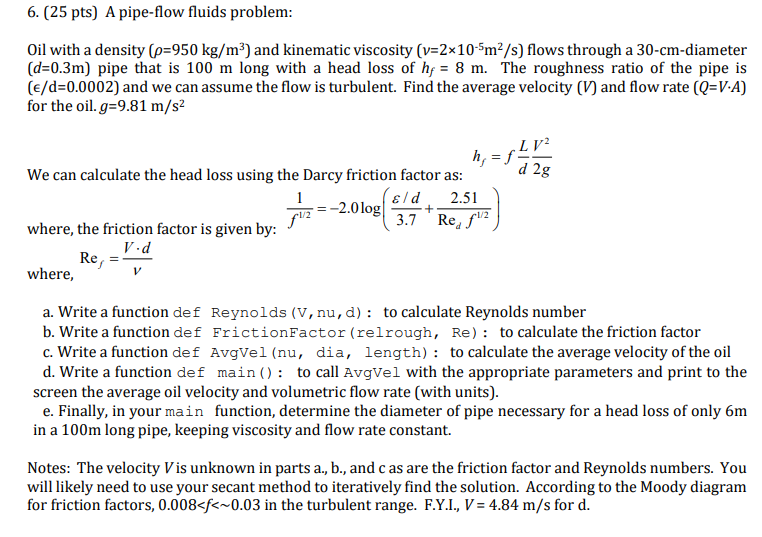Answered step by step
Verified Expert Solution
Question
1 Approved Answer
Use PYTHON please 6.(25 pts) A pipe-flow fluids problem: Oil with a density (p=950 kg/m) and kinematic viscosity (v=2x10-5m/s) flows through a 30-cm-diameter (d=0.3m) pipe
Use PYTHON please
Step by Step Solution
There are 3 Steps involved in it
Step: 1

Get Instant Access to Expert-Tailored Solutions
See step-by-step solutions with expert insights and AI powered tools for academic success
Step: 2

Step: 3

Ace Your Homework with AI
Get the answers you need in no time with our AI-driven, step-by-step assistance
Get Started


